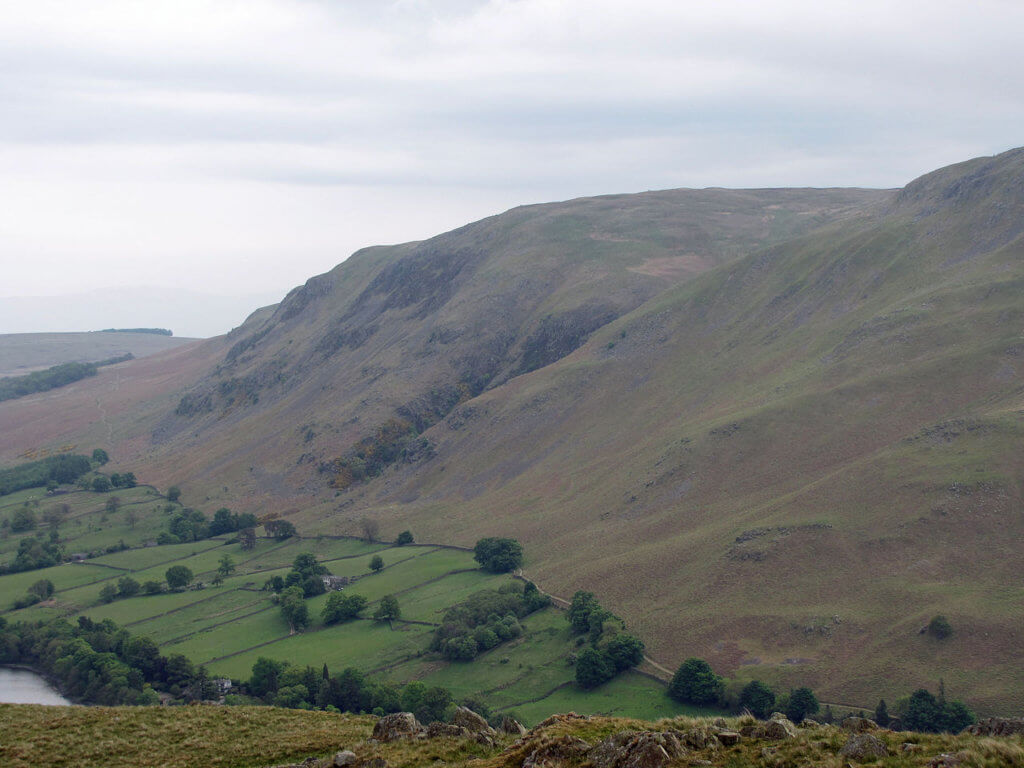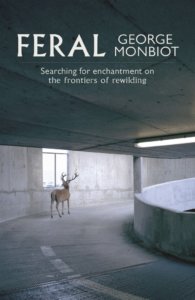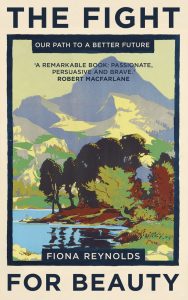
It’s not that I didn’t notice that The Lake District had been given World Heritage Status, it’s just that I haven’t had time to comment on it. And haven’t had time to keep up with the torrent of comment sparked by George Monbiot’s articles (The Lake District’s world heritage site status is a betrayal of the natural world, The Lake District is indeed a Sheep-wrecked landscape; The Lake District as a World Heritage Site – what a disaster that would be) – with which I very largely agree (so no need for me to comment when someone much better has already done it!).
See also Miles King’s blog on the subject (Sheep-wrecked or a World Heritage Site – thoughts on the Lake District).
In a much-needed and long-overdue tidy-up of my office, I came across an RSPB pamphlet The Uplands – time to change? which came out in 2007.
It uses the Lake District as a case study as follows:
‘The Lake District is widely regarded as a national treasure but, to some, its landscape is severely damaged. The hills are denuded of heather and woodland and show the effects of decades of intensive grazing. In wildlife terms, the Lake District is average, or below average, rather than exceptional. The status and quality of the Park’s environment should be apparent not just in the beauty of its landscape, but in thriving wildlife, and well-husbanded water and soils. The 12 million people who visit the Park each year should leave enthused by the vibrancy of this part of the uplands, and the role of the National Park in protecting and restoring their natural capital.’
The same document proposes a 5-point plan:
That plan still looks good to me today, and still looks needed. And yet the RSPB was part of the partnership bidding for the Lake District World Heritage Site status. Is that because the lengthy document supporting the World Heritage Site status will deliver these actions better than anything else? Or, perhaps the RSPB has changed its mind, for the Lake District hasn’t changed much in the last decade? Or perhaps the RSPB just wants to be in the gang with everyone else?
I can only attempt to answer the first question but the Nomination Document is a mighty pile of words. The Executive Summary tells me little about what might be done – maybe executives don’t feel they need to know things like that (but I thought they did!). Without reading every word of this immensely turgid document (with beguiling images of stupendous views) I did find evidence that all these issues might be addressed in the Strategies section. So, I think that is probably why the RSPB and others will have supported the bid. So, a big test of the World Heritage Status and its partnership is whether the status is seen as a badge of approval or as an incentive to make radical changes to land use and benefit people and wildlife. We’ll see.
What sort of countryside do we want? After all, we are all paying for it through our taxes. Here are three books to read to help you decide what you think about the Lake District:
 Take a long look at George Monbiot’s book, Feral, and see what he says about rewilding. It’s one of the most inspiring, irritating, provocative and persuasive books of recent times. It isn’t the last word on the subject, nor the first, but it is probably the best.
Take a long look at George Monbiot’s book, Feral, and see what he says about rewilding. It’s one of the most inspiring, irritating, provocative and persuasive books of recent times. It isn’t the last word on the subject, nor the first, but it is probably the best.
 Fiona Reynolds’s The Fight for Beauty is another excellent book and has a lot about the Lake District in it. It addresses landscape beauty to a much greater extent than wildlife beauty – just like the Lake District does. And I notice that my review discusses the Lake District as an example of the non-congruence of wildlife richness and landscape beauty.
Fiona Reynolds’s The Fight for Beauty is another excellent book and has a lot about the Lake District in it. It addresses landscape beauty to a much greater extent than wildlife beauty – just like the Lake District does. And I notice that my review discusses the Lake District as an example of the non-congruence of wildlife richness and landscape beauty.
 And last but not really least, read James Rebanks’s superbly written, though partly in my mind wrong-headed, book, The Shepherd’s Life, about the wonderful job that sheep farmers have done in the Lake District. Brilliantly written to appeal to townies this best-seller glosses over the damage done to the environment from sheep-wrecking. Phenomenal read though – this was my book of the year in 2015 for what it’s worth! Rebanks played a part in the World Heritage Site bid – no surprise, he farms in the Lake District and is a consultant on protected areas.
And last but not really least, read James Rebanks’s superbly written, though partly in my mind wrong-headed, book, The Shepherd’s Life, about the wonderful job that sheep farmers have done in the Lake District. Brilliantly written to appeal to townies this best-seller glosses over the damage done to the environment from sheep-wrecking. Phenomenal read though – this was my book of the year in 2015 for what it’s worth! Rebanks played a part in the World Heritage Site bid – no surprise, he farms in the Lake District and is a consultant on protected areas.
Read all three books, and then see what you think about the Lake District…
[registration_form]

I wonder if water extraction is the main theme for the Lake District as shown by a recent visit to the new areas of the RSPB Haweswater management areas by the Carlisle NHS. This would mean sheep come a long way down the line as far as management of the area. Cleaning water costs £millions and moving sheep from the fells plays a great part in cleaning water.
Then there are the lakes themselves. Windermere has lost a large reed bed from its southern shores and many of these lakes have rare fish in them. Large numbers of tourists create large amounts of nitrate rich manure often seen heading for these waters changing the ecology of the area. May be there will be signs suggesting ‘Go before you enter’!
The area was also sold on William Wordsworth (7 April 1770 – 23 April 1850) – so are we to see both Golden and White tailed Eagles, arable crops in every parish, Corn Buntings, Yellowhammers, Pine Martens, Wild Cat [not to be confused with Scottish!!], Polecat, Marsh Harrier and Hen Harrier all need bringing back to make this Lake District ‘World Heritage site’ work!
is the loss of reedbeds at southern end of Windermere not partly due to the water companies lifting the level of the lake by 6 inches at the weir nr Newby Bridge in its greed for more water in the 1970’s
david cousins – welcome to this blog.
UNESCO’s criteria for awarding the status are kind of interesting. Or, rather, the criteria they did not use. The relevant link appears to be http://whc.unesco.org/en/list/422. Up in the top right, the criteria mentioned are ‘(ii)(v)(vi)’, linked to a full list of 10 possible criteria. Skipping the three used, the following (cut and paste from UNESCO’s list) were NOT used:
“(vii)
to contain superlative natural phenomena or areas of exceptional natural beauty and aesthetic importance;
(viii)
to be outstanding examples representing major stages of earth’s history, including the record of life, significant on-going geological processes in the development of landforms, or significant geomorphic or physiographic features;
(ix)
to be outstanding examples representing significant on-going ecological and biological processes in the evolution and development of terrestrial, fresh water, coastal and marine ecosystems and communities of plants and animals;
(x)
to contain the most important and significant natural habitats for in-situ conservation of biological diversity, including those containing threatened species of outstanding universal value from the point of view of science or conservation.”
I read this as something of a slap in the face of the National Park as any kind of guardian of natural heritage, be it geological or biological. UNESCO could have used those criteria if they thought them justified: they chose not to.
Deep in the bid documents (http://www.lakedistrict.gov.uk/__data/assets/pdf_file/0009/729693/3.0-Justification-for-Inscription.pdf) I now find that the nomination was only based on those three criteria ‘(ii)(v)(vi)’ – the bidders did not even attempt to make any claims based on natural environment – criteria vii-x. This is solely about cultural heritage, which probably tells us how it will be managed for the future, and makes the involvement of RSPB etc rather surprising.
This seems to come from the RSPB????‘
Whoever it is seems to suggest that us 12 million are a bunch of bloody thickos.
The Lake District is widely regarded as a national treasure but, to some, its landscape is severely damaged. The hills are denuded of heather and woodland and show the effects of decades of intensive grazing. In wildlife terms, the Lake District is average, or below average, rather than exceptional. The status and quality of the Park’s environment should be apparent not just in the beauty of its landscape, but in thriving wildlife, and well-husbanded water and soils. The 12 million people who visit the Park each year should leave enthused by the vibrancy of this part of the uplands, and the role of the National Park in protecting and restoring their natural capital.’
At Haweswater I think the RSPB are probably doing all the things set out in their 5 point plan – see page 49 of Autumn Nature’s Home for an example: “Magnificent Meadows at Mardale Mountain”. And they’ve restored a flood plain. RSPB do try and practice what they preach.
I expect the RSPB are hoping that World Heritage status will help conservation in the Lakes and may unlock some funds – but let’s be negative if we can eh?
Bob W – well I think that’s what my blog said…
Up to a point, Mark! You did rather suggest that nothing had changed since 2007 whereas RSPB and its partners have been hard at work. If they, and others, can show people what a more natural Lake District would be like, and people like it (and why shouldn’t they?) perhaps wider change will come – I certainly hope so.
Bob W – don’t be so negative (see what I did there?)!
I said the Lake District hasn’t changed much (meaning that the RSPB analysis still stands).
Your comment seems to support that view when you say ‘If they, and others, can show people what a more natural Lake District would be like, and people like it (and why shouldn’t they?) perhaps wider change will come’.
Try again if you like…
Thanks Mark. Of course the RSPB analysis still stands – I just thought there was a positive story to be told as well. Actually, I don’t think we disagree on the substantive issues here at all. Let’s not get into hair-splitting territory; I’ve given it my best shot!
• Promote less-intensive grassland management.
• Reduce grazing pressure to allow recovery of upland heath vegetation
To me this sounds ridiculous as sheep are never kept intensive on this rough grazing, the first thing to suffer would be the condition of the sheep and so lamb production.
Most people are quite happy with how the Lake District looks and maybe the alternative of Grouse maybe a worse option.
A few people IMH go on about overgrazing by sheep and the clique jump on the bandwagon.
Let them explain in simple terms how can overgrazing be achieved while maintaining the sheeps condition which no responsible sheep farmer will allow to happen.
Dennis Ames: supplementary feeding. Allows more sheep to be kept on hill than can be supported by vegetation.
Arc,never would work they work on such small margins and only supplement feed in desperate times as Herdwick sheep are a extensive breed and favoured by Lake district farmers.
Politely put you are completely wrong.
I am extremely happy with how the Lake District looks – and I go there regularly and know it very well. George Monbiot’s description of the Lake District just does not ring true with me. I’m not exactly sure where all the “missing” trees are supposed to be. In my view the high fells are a montane environment and I hear ring ouzels there. I don’t see over-many sheep (and although I am no farming expert I do not believe that they are supplementarily fed). The “tracts of bare mountainside on which every spring is a silent one” are a geological feature and not an ecological disaster. It’s all beautiful.
I live in the Lake District – and I agree with George Monbiot about the damage modern farming methods can produce. You may not get many trees growing on the upper rocky fells but there are lower slopes which should be well within the tree line, and would regenerate once no longer grazed. Bare hills are not exclusively a geological feature, but man-made. To me, the most beautiful valleys in the Lake District are those like Borrowdale, where there is a lot of tree cover. This is contrary to farmers’ opinions, who think we all like just grass.
It’s not entirely clear where the natural tree-line would occur in the Lake District, if it ever had a chance to reveal itself. Derek Ratcliffe suggested (and who would argue with such a towering figure?) an altitude of 535m, but this would have been based on the climate in the 1970s. SNH observe that stunted Pine woodland occurs at 640m in the Cairngorms – which have a much harsher climate than the Lake District. With climate change we can add a significant increase in altitude onto Ratcliffe’s figure.
How much of the Lake District does that leave beyond the tree-line?
Above the tree-line the natural vegetation would be montane scrub, which would include a mosaic of montane heath, montane grassland, open rock, scree, flushes, snow beds and so on. There might be very small areas of natural montane heath and grassland beyond the montane scrub zone, under natural conditions, and this is confirmed by the presence of a small number of arctic-alpine species of plants and associated invertebrates.
It’s not clear what natural grazing animals would have occurred at these altitudes before large-scale landscape change was brought about by humans, but I would suggest deer and mountain hare as obvious candidates. Ibex also occurred here at least up to the late paleolithic – and this seems like an ideal candidate for a natural herbivore of these mountain top zones (predated by Lynx). Bears would also have had an impact on the montane environment with their grazing and den-building activities.
Would beaver have been present at high altitude? They occur at altitudes of up to 850m in mainland Europe, so it seems likely that they would have occurred high up into the montane zone of the Lake District, substantially altering the landscape around montane flushes and valley-heads, encouraging the formation of peatlands such as upland mires and bogs.
Either way, it is incorrect to suggest that the Lake District hills and mountains are kept as tree-less sheep pastures, purely by natural ecological or geological processes. Even the proponents of the UNESCO designation do not suggest this.
Miles – you’re a star. Thanks
Dennis – I think part of the problem here is that farmers use words like ‘overgrazed’ in a different way from ecologists.
You’re speaking as a farmer, and as long as the grazing is not destroying the grass cover and causing hardship to the stock, you’re happy with it. By contrast, an ecologist might say that an area was overgrazed if the grazing was reducing the diversity and abundance of the flora present. Many grass species are very tolerant of heavy grazing and trampling, but broadleaved plants are much more sensitive and are reduced or eliminated long before the grass cover is lost or seriously damaged.
A longer, more varied and more species-rich sward with lots of broadleaves can support more insects and birds than a short, grass-dominated sward. From an ecological point of view, vast tracts of our uplands are ‘overgrazed’, even if they look OK from a farming standpoint.
Feral is a wonderful book. I use it as a conservation issue bible; using it for references and further study. My problem is is that I buy a copy and then give it away to the next nature loving person I meet! Just gave one to a conservationist in The Manu, Peru and I need a new copy.